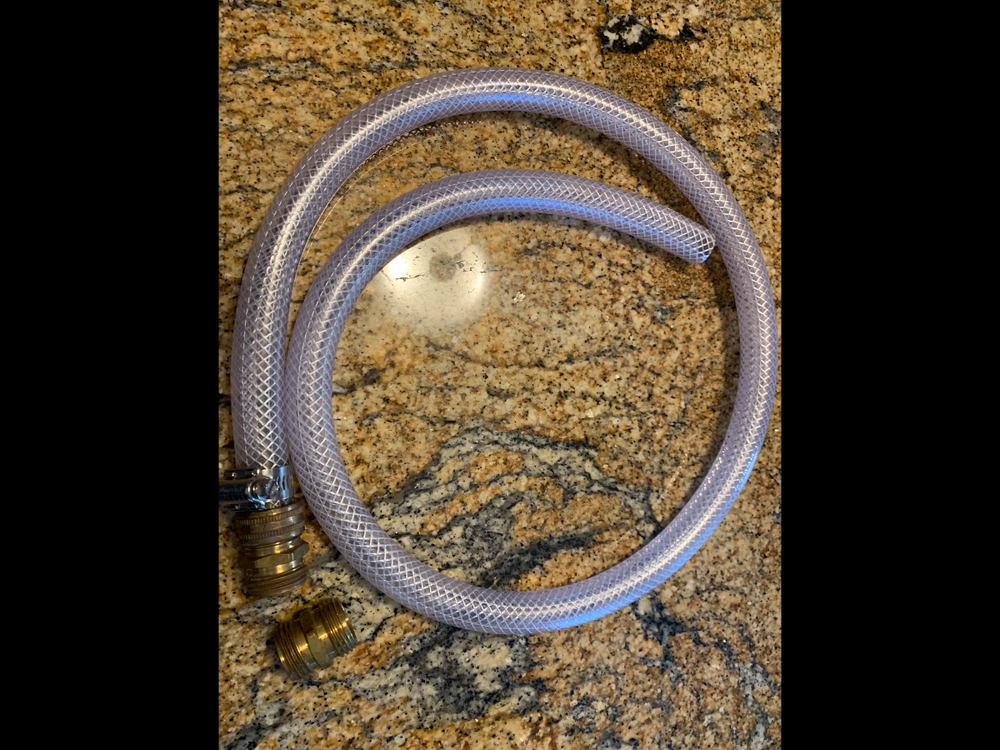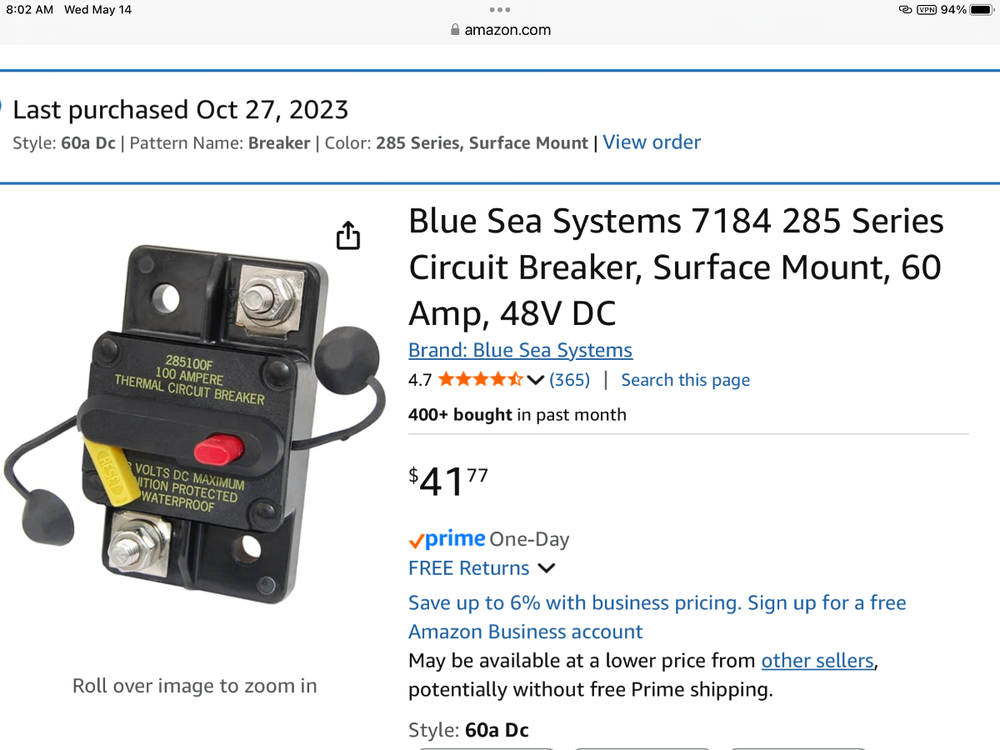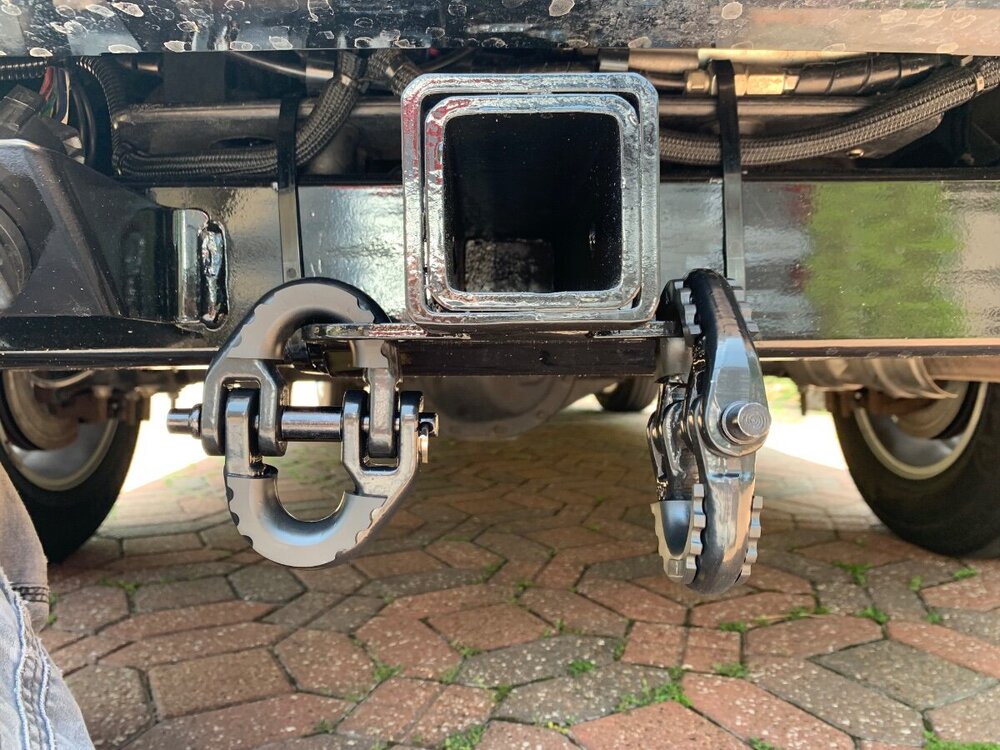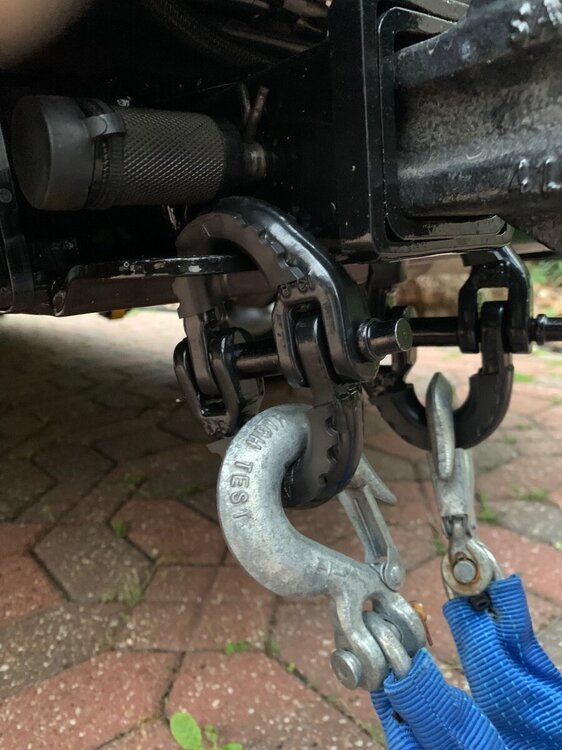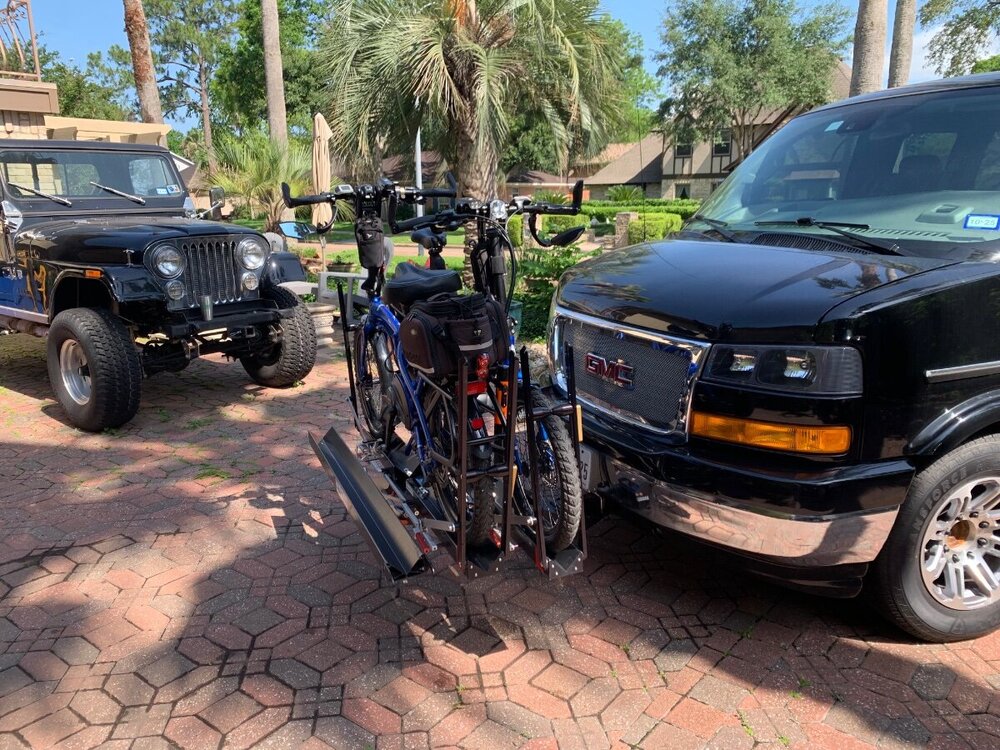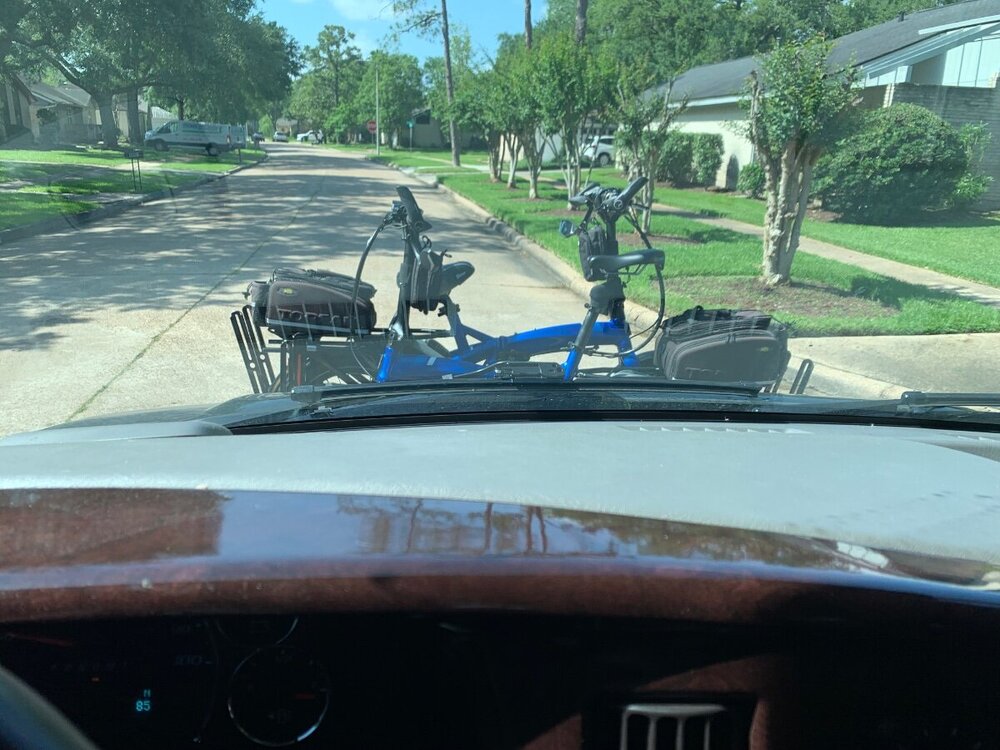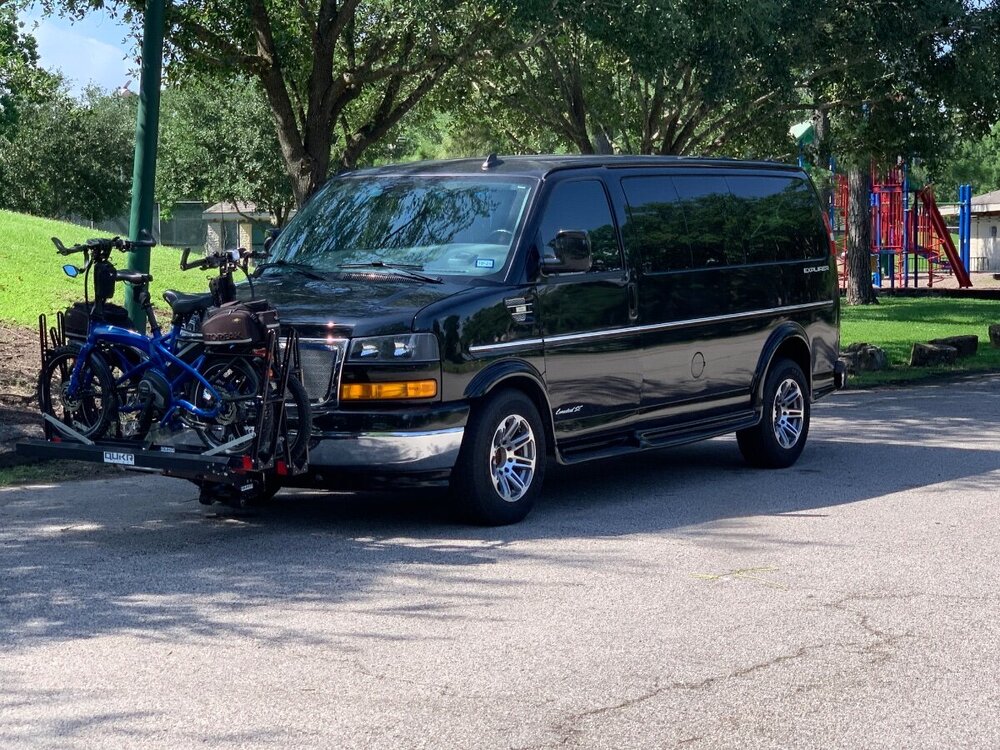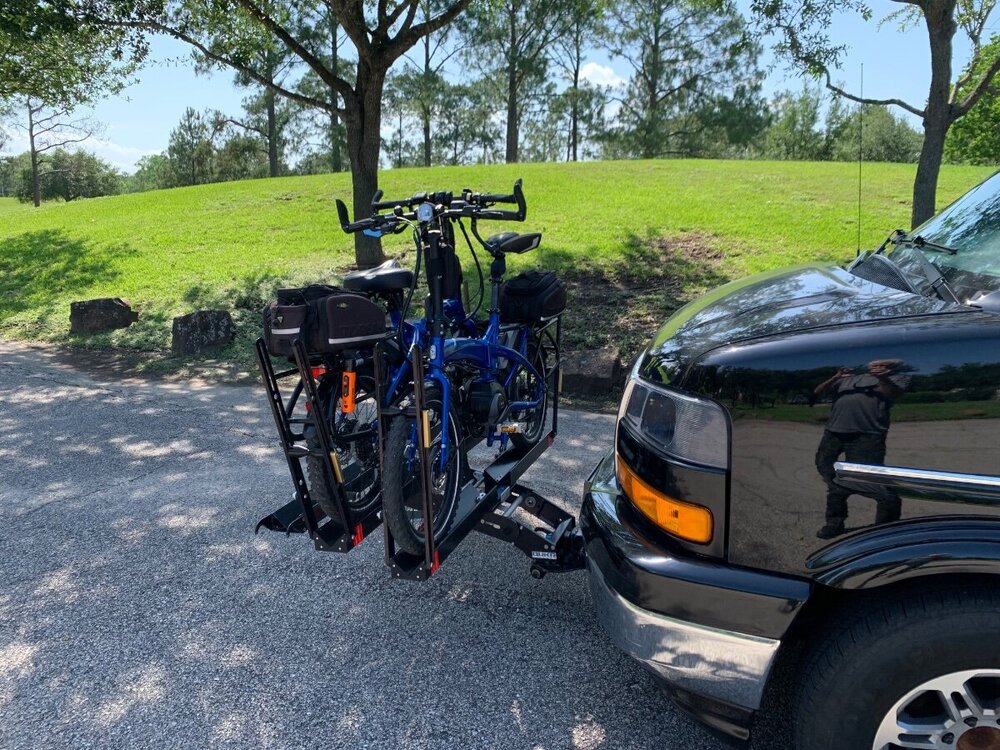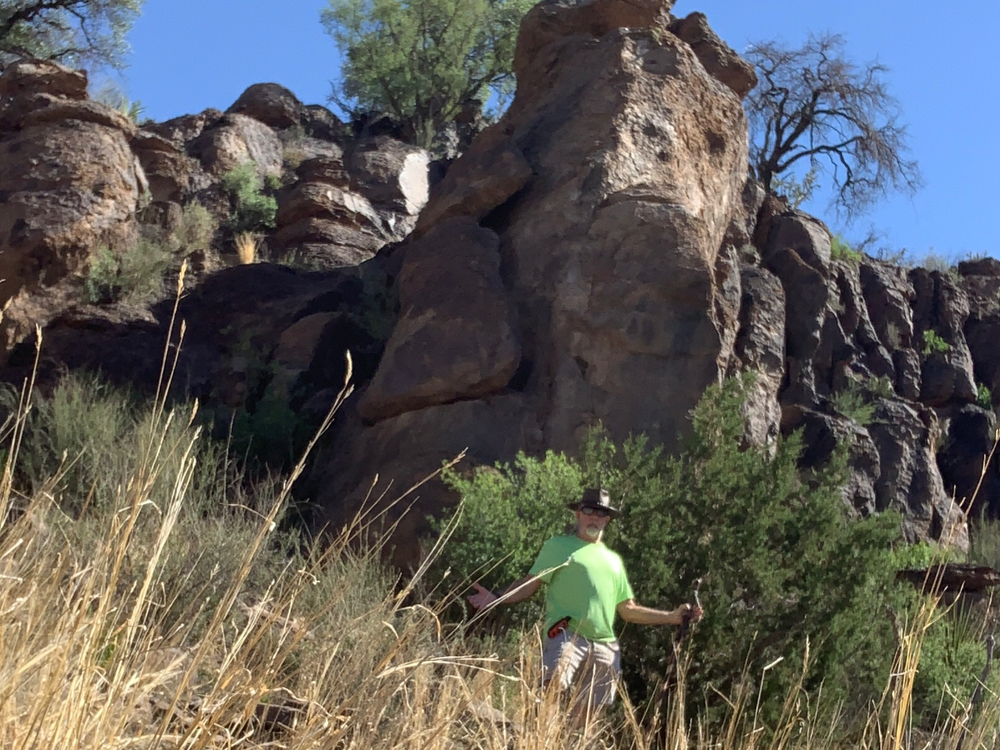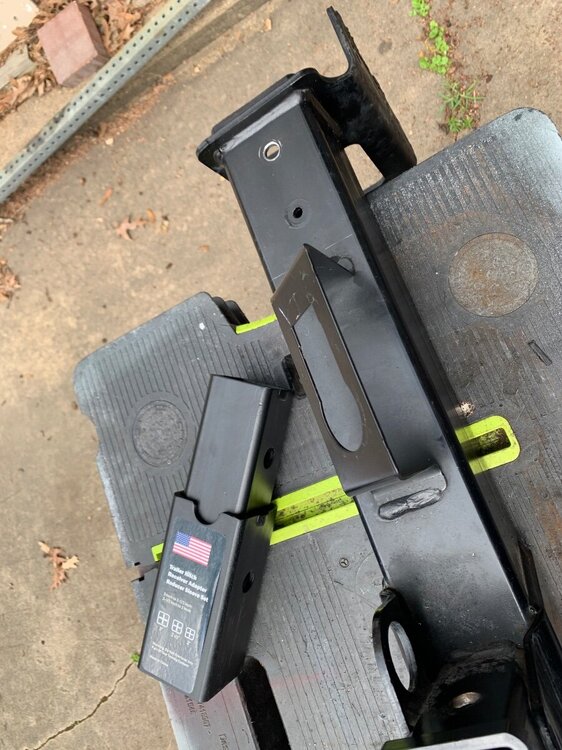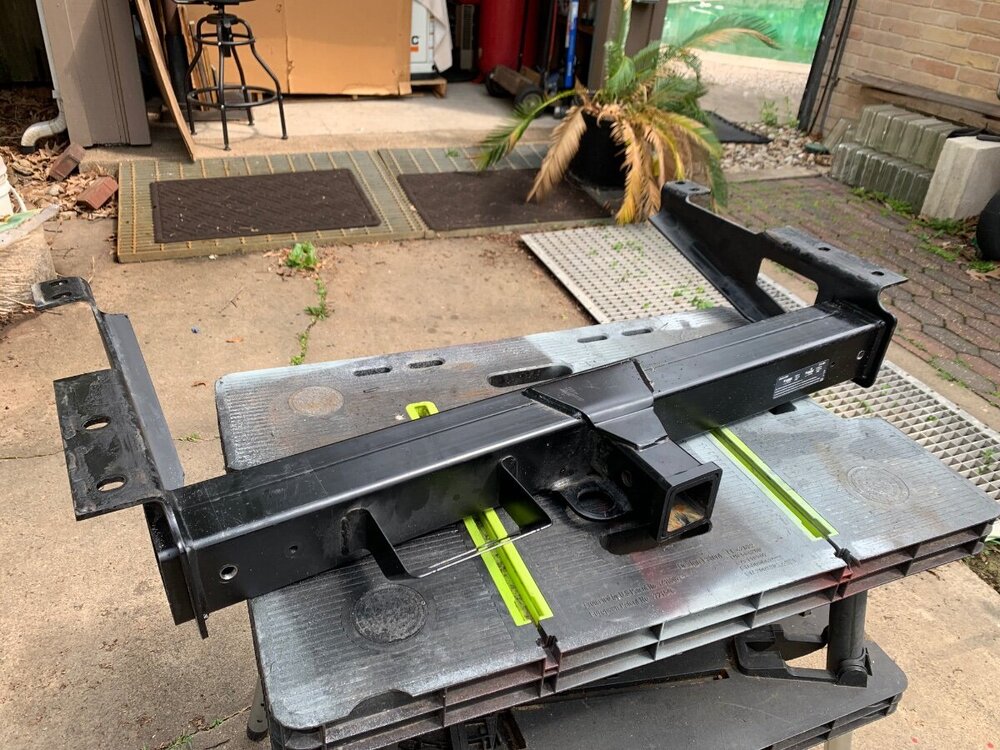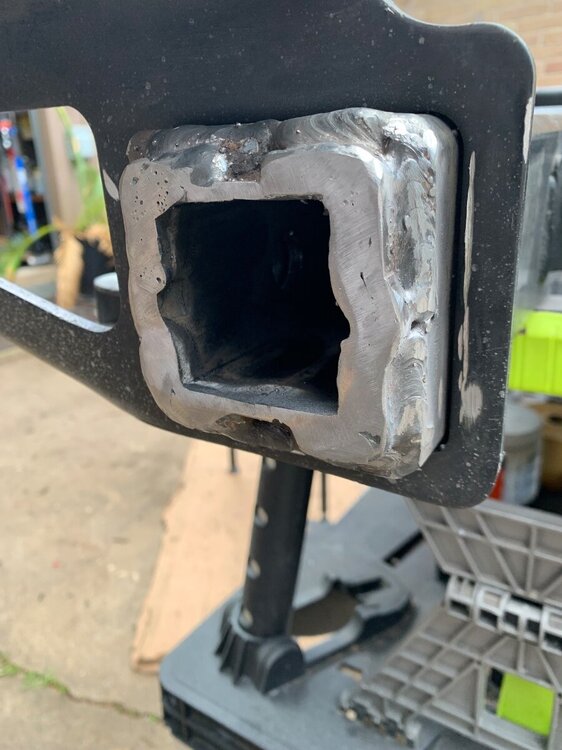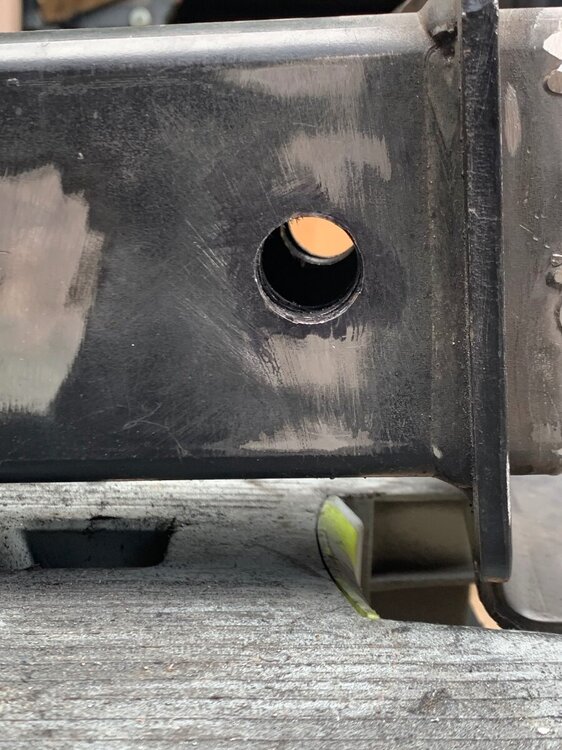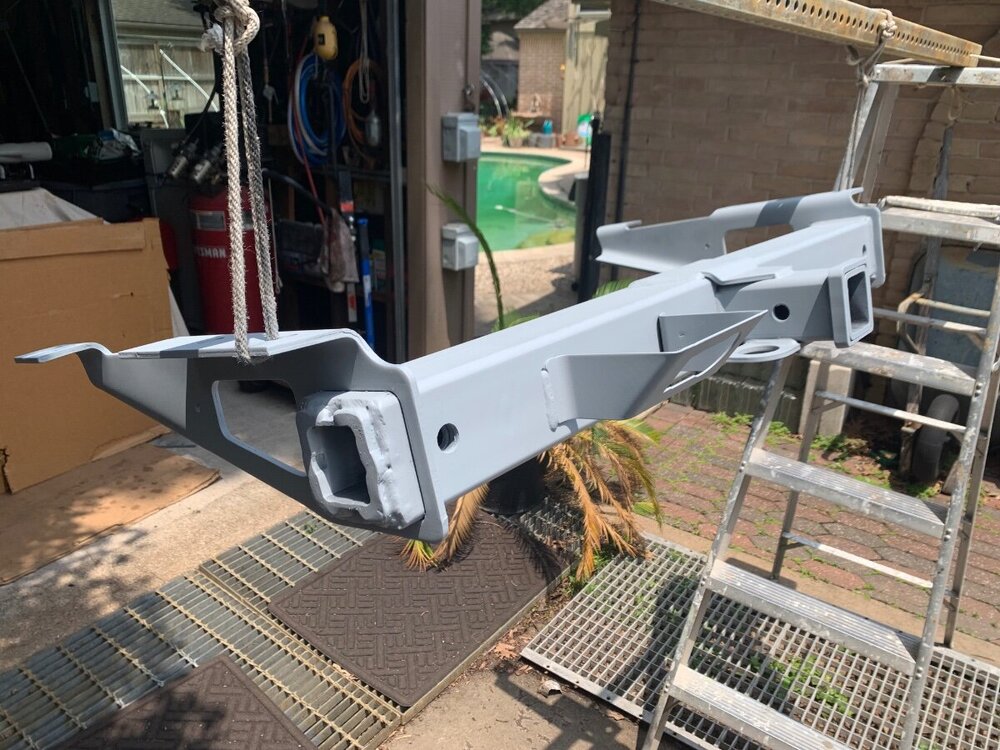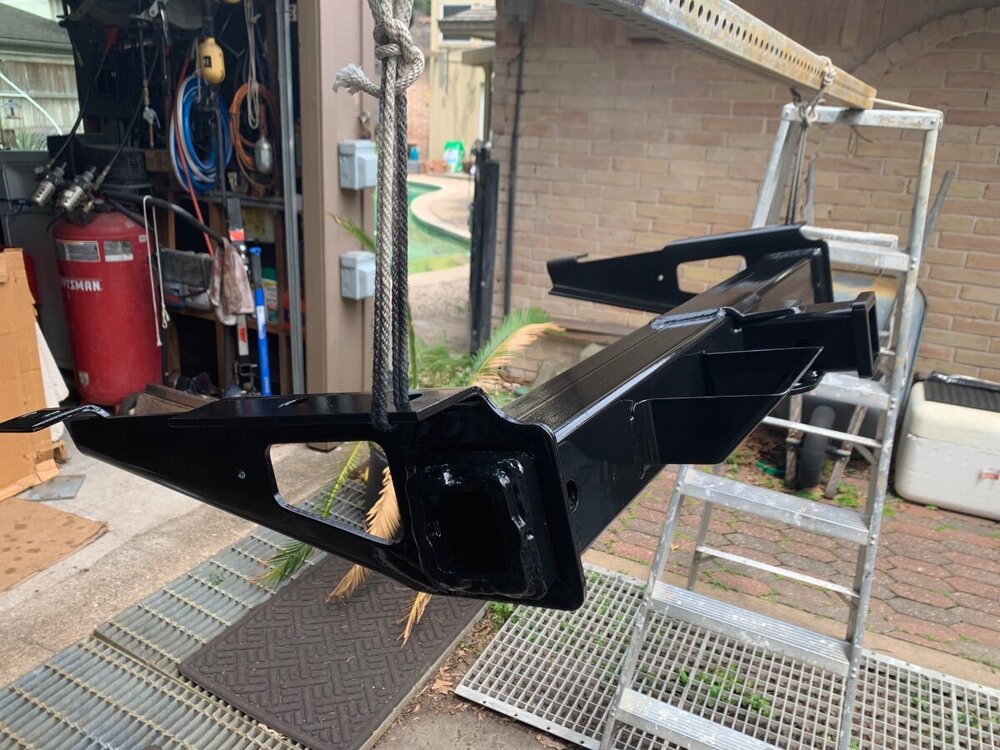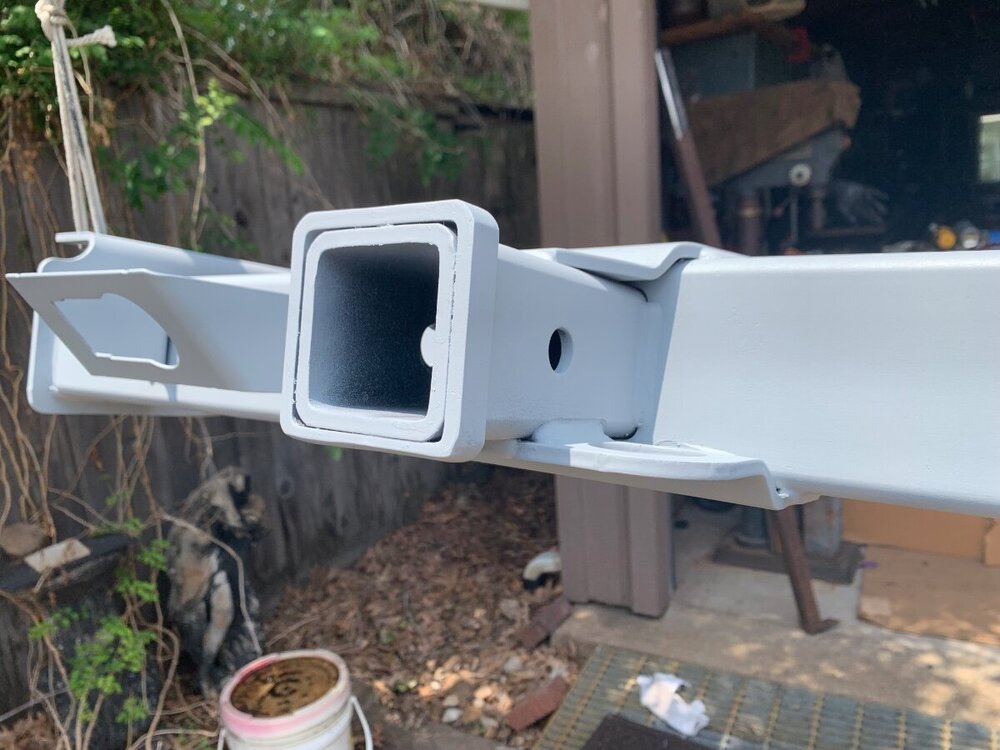-
Posts
1,121 -
Joined
-
Last visited
-
Days Won
35
Everything posted by Ronbrink
-

Gorilla compact 25’ hose for marine and RV use
Ronbrink replied to Patriot's topic in Mechanical & Technical Tips
That @jd1923 really has it goin’ on with his water and power setups! -

Replace Colorado Carefree Awning
Ronbrink replied to chuckstovall's topic in Mechanical & Technical Tips
Likely MacGyvered adaptations!! Actually, Carefree offers a height adjustable vertical stabilizer that looks universal for all awning types. -

Gorilla compact 25’ hose for marine and RV use
Ronbrink replied to Patriot's topic in Mechanical & Technical Tips
That will work or get a small section of PVC clear reinforced braided vinyl tubing. My dedicated hose fits inside a gallon Ziploc bag for ease of storage. Mostly used in the tank sanitation process via the boondocking port, but I also carry two 5-gal collapsible containers if fresh water supply ever runs low. I can see in your application where the longer hose would be necessary. -

Gorilla compact 25’ hose for marine and RV use
Ronbrink replied to Patriot's topic in Mechanical & Technical Tips
It would take me two beers to patiently and correctly wind up the Gorilla, being that I would probably fumble it a time or two trying to get the perfect roll and have to start over! -

Replace Colorado Carefree Awning
Ronbrink replied to chuckstovall's topic in Mechanical & Technical Tips
Right that! I’ve seen where support posts are placed at each corner of the awning (which manual awnings already have or variations thereof) and the bottom of the sunshade is anchored. Supposedly this makes for a more stable setup in windy conditions. -

Legacy Elite II with 3000w Inverter - Generator Setup
Ronbrink replied to EurekaJ's topic in Mechanical & Technical Tips
Many praise the addition of a DC to DC charger, more is better! -

Gorilla compact 25’ hose for marine and RV use
Ronbrink replied to Patriot's topic in Mechanical & Technical Tips
I’m a zero-G guy, carry three for dedicated purposes; freshwater fill, black tank rinse and general wash hoses. I find them easy to roll up and stow; they are very flexible and durable. Each are setup with quick connects and accessories for their respective applications. -

Replace Colorado Carefree Awning
Ronbrink replied to chuckstovall's topic in Mechanical & Technical Tips
Aftermarket sunshade kits are readily available for a variety of awning makes and models. One would want to turn off the switched power with use on an auto retract unit. -
Humidity is definitely an issue in hot climates, especially when outside relative humidity levels are high. The Oliver’s interior can become muggy feeling if the HVAC is inefficient in removing excess moisture and thus, dehumidifiers are subsequently used with varying degrees of success. Proper ventilation practices can help alleviate this issue, as well as other moisture management measures within.
-

Weigh Safe 180 Aluminum hitch with 3” shank, 10” drop
Ronbrink replied to Patriot's topic in Towing an Oliver
You had me concerned since I purchased my hammer locks some time ago and just now got around to installing them on the Savana. These have a stout cotter pin for an easy install and removal, if necessary. The rubber boots are a nice feature, but do add thickness to the chain connector link. However my stock chain hooks had good fitment, but the locking hitch pin was a close fit. You may want to consider replacing the chain hooks on your setup in order to make use of the hammer locks. -
In preparation for next week’s trip, I thought best to test out our ebikes on the bike rack setup I recently retrofitted on the Savana. All went well and pleased that my vision from behind the steering wheel was even better than with the former TV. The front receiver hitch and bike rack rode solid around a neighborhood excursion. As a reminder, the folding ebikes are transported inside the van when underway to a destination then staged on the QuikrStuff bike rack once in camp. I do drive around with them mounted while inside a CG, to trailheads of proximity or nearby attractions.
-

Another Andersen WDH idea
Ronbrink replied to Nick and Linda Stratigakis's topic in Ollie Modifications
@dmtaylor2, you my be on to something! I have zero experience with the Anderson WDH, but have used the lever load binders in the past and still have some at the house if a need arises. I strongly suggest you secure the level arm, for ‘peace of mind’ if nothing else. -
Okay thanks! I’m only concerned with the forward-facing dash cam capability and not trying to incorporate a rear camera. Was the “cut in and out” with the dash cam, rear camera or both?
-
I need to check out the dash cam feature on my Garmin GPS RV785. Anybody have experience with their’s to share?
-
The Garmin inReach Explorer+ is my ‘kitchen pass’ to travel solo! I wear it on my person, to the extent possible, to ensure it is within reach if needed. Pic of me off-trail in remote West Texas in the heat of summer, daytime temps were 100+° during my stay.
-
The Garmin inReach service can be suspended when not in use as a cost saving measure, can be used to summon help to others in dire need at no risk of costs for their emergency/medical response, weather forecasts are available, and they offer very reasonable and affordable SAR plans.
-
I’ve nearly completed Phase1 of the swing rack builds. The rear receiver hitch was removed from the Savana to enable some preliminary modifications, specifically welding reducer inserts in each end of the hitch’s cross tube, drilling holes for locking hitch pins and repositioned Air Lift auxiliary fill lines, and repainting. Once the paint is fully cured the hitch will be reinstalled in readiness for Phase2, actual fabrication of the individual swing racks. Unlike a pickup truck having a dropdown tailgate where a single swing arm would span the width of the vehicle, the van has two rear half doors and thus, separate swing arms for the custom racks. Also, unlike conventional installs where a vehicle’s rear bumper is either modified or replaced to accommodate a swing out carrier hinge, I’m making use of the stock receiver hitch to support the pivot points from below the bumper, whereby avoiding inherent door operation and clearance issues. The receiver hitch, as removed, plus preliminary holes drilled at each end for additional locking hitch pins. Reducers to transition the 3.5” OD square hitch tube to a 2” ID receiver. Reducers welded into hitch tube at each end. Matching .75” holes drilled in hitch tube for use of locking hitch pins to secure pending swing racks. Modified receiver hitch primed. The two hitch tube ends with installed reducers will now serve in like manner as the hitch ball mount receiver with locking pins. Final topcoat of paint applied. Modified receiver hitch ready for installation pending paint cure. Note the two small holes drilled in the support arms next to the voids where the Air Lift Schrader valve fill hoses will be repositioned. And that is it for now!
-
I made the above comments on April 18th, at which time I played around with the Sleep Mode on the Atmos. Upon departure of these routine visits I always check to be sure everything is turned Off, except for the dehumidifier. Admittedly, there have been a few times after locking up the Oliver and then the COW Barn when I question whether or not the dehumidifier was turned back On, or the closet light and water pump turned Off and thus, back inside to check all again. I recall everything to be in good order so back to lockup and departure. Well, when I went back on April 24th to pay rent I was baffled to see a puddle of water upon entering the COW Barn; my first thought being somehow the roof developed a leak from recent heavy rains. However, when entering the Oliver I felt the cool and comfortable 73° interior and noticed the Atmos’s fan was On, then realized the puddled water was condensate. YIKES, it was SO QUIET I didn’t even realize upon last departure it was still running! Now this isn’t a testament to how wonderful the Atmos is and pleased I am with its performance, but rather that of the Hughes Autoformer I permanently installed. Fact being, the storage facility only provides 15A service and with recent severe storms that device’s surge protection may have prevented damage to my Oliver’s electrical system or even the Atmos. More importantly, upon checking the Autoformer was boosting voltage, which I have observed a few times since the install during storage. This occurs when line input voltage drops to 116 volts or below, wherein the unit’s output is automatically boosted 10% over the input. It is a known fact that insufficient voltage, both spikes and surges, can cause irrepairable damage to sensitive electronics and RV air conditioners, and the primary reason for having this extra layer of protection the Hughes Autoformer provides. There is comfort in knowing that if I inadvertently leave the Atmos On at the COW Barn, given the minimal service, or run it at a CG where service issues may occur that my electrical devices and Oliver are fully protected. ‘Nuff said!
-
The above response to your question from @Steve Morris is a very practical approach to ensuring adequate power to a TV-staged fridge/freezer unit, especially taking into account longer run durations with use of the OTT’s battery bank. My approach was somewhat similar, however my former TV had a 200W solar array atop the bed cap for the specific purpose of helping to keep a homemade 100Ah LFP power station sufficiently charged for extended use. I can get 33 hours of continuous run time on the PS alone, and as much as 48 hours when the solar input was optimum. But at some point the PS would need a supplemental charge and thus, an AC powered battery charger came into play either upon reaching a campsite with shore power or via the OTT’s inverter power. I installed a forward-facing AC outlet on the propane tank housing for the same purpose @Steve Morris plans to install a 12v Anderson, but in my setup I utilize the inverter when underway to supply AC power to my Dometic CFX 75DZ, as needed. Since I have yet to install solar on my current TV, supplemental charging of the PS is provided via an extension cord from said outlet into the van to power a Victron 30A Smart charger connected to the PS. Although this setup works great when the Oliver is in tow, pending install of solar on the van rooftop is needed for other lengthy travel times or when venturing away from camp and AC power is unavailable for supplemental charging. Remote charging of PS:
-
I did install one up front under the cover with a hose that reaches outside via the screw port and one at the rear, as well, inside the bumper at the usual position. As for my particular fire pit arrangement, it was best to not alter the hose/regulator assembly due to inherent issues. Also, I like being able to use the fire pit away from my camp on a spare tank with group gatherings and thus, another reason for keeping the stock hose. 10’ propane supply hose coiled atop tank for convenient use, as necessary, and tapped into OTTs regulated line:
-
Understood, I’m one to fully protect important outlets, especially with my fridge. Potential power disruptions from a wet/compromised 12v circuit is hard on a compressor and the unit in general IMO.




